Last night, 611 voters showed up to the fall Special Town Meeting. Given the number who fled the building after the vote, it’s safe to say that the majority showed up to vote on Article 8 — the MBTA Communities Zoning Overlay Districts & Bylaw.
After two hours of discussion and debate, voters approved a request to cutoff further discussion and get to the vote. The bylaw passed by a hair, 281 to 273. (If just four voters had made a decision in the opposite direction, the vote would have failed to reach the majority needed.)
Many of the voters showed up with a clear agenda of voting for or against the Article. And I don’t know how many residents made up their minds, or changed it, during the long debate. But I’m confident it was more than four.*
Outspoken residents included those that wanted to fight the state and other who felt it would be a costly losing battle. There were voters who wanted to support a principal of more inclusive housing and those that voiced anger at the principal of the state forcing changes on the town that aren’t right for our community.
There were those who wanted to try to find a different solution, and voters who believed punting the issues would land us back at an even more chaotic Town Meeting in December with a precarious deadline looming.
There were arguments that any changes to try to find a parcel with less issues would cause upset with other residents and there were no better options for a clear alternative that would meet the state requirements.
In the end one of the statements that may have made the difference with persuadable voters was an answer Town Counsel Jay Talerman gave to a resident’s question. He assured that if voters decided there was reason to (like the outcome of a pending legal decision over Milton’s battle with the state), a future Town Meeting could rescind or amend the bylaw before or after December 31st.
As for what voters and officials said during the two hours — passionate and compelling arguments were made on both sides. I can’t possibly recap it all, but I can pick out some highlights to share. (To watch the full discussion, starting with the intro, you can click here.)
The Presentation
Planning Board member Marnie Hoolahan gave a 20 minute presentation outlining the Article and why the board was asking for voters’ support.** She started off using a hypothetical example to demonstrate why more diverse housing options are needed in Southborough. She described a couple who had long lived in their Southborough home and now have grown kids with kids of their own. The couple can’t downsize because there aren’t enough options, mostly single family homes. And their children can’t afford to buy a home in their hometown given an average price tag that she said Zillow showed as $1M these days.
Hoolahan then walked residents through what the zoning does and doesn’t allow, where the districts are and specific details for each, and the process by which they were chosen. Although 15 units per acre are zoned by right, developers have to apply and go through a Site Plan Approval process, and the number of units will be limited by their need to meet restrictions/requirements for height, setback, etc. Wetlands in the area and septic constraints will further limit development.
She also warned of the financial and legal implications for not complying with the state law by December 31st. The Town would lose funding from many state grants and be forced to defend itself against legal actions from the Attorney General (and possibly other lawsuits). Hoolahan also pushed back on community dialogue about the state law being inappropriate for our small town. She emphasized that the Town’s requirements are lower than many larger towns and that the state did already respond to Town officials’ original complaints by allowing them to locate much of the zoning outside of the challenging ½ mile area around the MBTA Commuter Rail Station.
(You can view Planning’s full deck of 33 slides here or some of the key ones below.)
The Response and Debate
Following the presentation, Freddie Gillespie made a counter presentation for a group of abutters to District 1B on Southville Road. One of Gillespie’s main objections was that the abutters most directly impacted by developing the property were outside of the semicircle originally communicated to the public. Thus, they weren’t specifically invited to the mapping sessions or made aware the selection was a possibility. So the southside area residents’ feedback on prioritizing parcels didn’t include the opinions of people who live closer to that property.
She called for voters to push the Town to hit “pause” on the zoning law. The Town could hold another Special Town Meeting in December if necessary.
Gillespie argued that Town officials should work with other towns who have yet to succeed in passing bylaws, to argue that One Size Doesn’t Fit All. She clarified that she wasn’t talking about the number of acres or overall units. She was referring to the density of 15 units per acre by right as inappropriate for a small community. She also wanted to wait for the Supreme Judicial Court to hear the case against Milton (which defied the bylaw) “to see what the consequences [of non-compliance] really are”.
She followed that as someone who has been trying to work to get more affordable housing in town for 20-25 years, it “breaks my heart to be here in opposition to creating more housing”. She emphasized that the 10% of the units that would be affordable would be set for an 80% median income, not truly affordable. She urged the community to “roll up our sleeves” and work on creating something better to really address the issues.
Gillespie warned that the restrictions for heights and setbacks the Planning Board assured voters of could be overridden. Developers could apply for variances from the Zoning Board of Appeals, justified by their inability to reach 15 units per acre otherwise.
 And she stressed her alarm at the potential environmental impact to the area Biomapped by the MassWildlife’s Natural Heritage & Endangered Species Program, which is also a flood zone.
And she stressed her alarm at the potential environmental impact to the area Biomapped by the MassWildlife’s Natural Heritage & Endangered Species Program, which is also a flood zone.
Much later in the meeting, Paul Carter, an engineer, argued that the high density residents were scared of wasn’t possible on the selected sites:
the requirement is 110 gallons per bedroom, okay? A 15 unit two-bedroom development that means you got to be able to put 3,000 gallons of waste waterer into the groundwater. You have to have sand for septic. . . they’re not going to be able to obtain 15 units per acre.
He also defended the Planning Board for having worked hard to minimize the impact on the Town, picking parcels that should result in only adding150 units to the entire town rather than 500-750 units. He appeared dismayed that it won’t make a difference with affordable housing, but said there was no way that a real solution would get approved at Town Meeting.
Howard Rose was among the minority of Advisory Committee members who opposed the bylaw. As one of the early commenters, he argued that the dense development would cost taxpayers through a burden on schools and an already overburdened police department. He pointed out that traffic studies hadn’t been conducted on the potential impact.
A number of voters argued on behalf of supporting the bylaw to increase diversity of housing and options more affordable than the $900K-$1M single family homes in town. James Nichols-Worley and Ellen Marya were among those who publicly campaigned to turnout a vote in favor of passing the Article.
Marya pointed out that traffic studies are conducted on projects based on their specifics details, not on zoning. She said that they would be part of the Planning Board’s oversight through Site Plan Review. And countering Rose’s concern about the police department, she highlighted that one of the staffing challenges they face is lack of housing in town that officers can afford. (She quoted this MySouthborough story.) From an economic standpoint, she, highlighted the grants that the EDC says are needed from the state for work necessary to attract businesses to Route 9.
Later, Paul Desmond spoke, a former longtime Southborough School Committee member (and current member of the Regional School Committee and the Southborough Housing Opportunity Committee). He pointed out that enrollment for the schools has dropped over time and assured that the schools would easily absorb students if an 80 unit project was built on Southville.
There was a lot of desire from residents to follow in Milton’s steps or at least monitor the results. Two former Milton residents disagreed.
Michael Dillon of 2 Ted Lane said that he grew up in Milton, which has a history of fighting things like this. Unlike Milton, Southborough should be on the right side of history. He didn’t believe the legislation was written the best way, but “we can’t change the law”. Emily Cavalier said that she moved from Milton last spring because it became even less affordable than Southborough. She warned that Milton is now paying for voters’ decision to repeal the previously passed law. They immediately lost grants, are paying for outside counsel to defend themselves, and have been legally advised that they won’t win.
John Gibson highlighted that he used to live in Silicone Valley and witnessed what happened when housing prices got out of control and there were no affordable options for even doctors and engineers to live — driving people from the area. He didn’t want Southborough going down that path.
Frank Tipton argued for Town Meeting voters to do something for the public good.
Beth Conlin spoke as a Southborough native who moved back into her parents’ home during lockdown to help them. She continues to live there, to allow her mother to be able to keep the home she has lived in for 55 years and hopefully save enough for her own place. She remembered when residents had feared having an MBTA station and that “has become one of the best assets in town”. She said she falls in between affordable housing and the current housing costs and there aren’t enough options. A condo near the train would be ideal for her, but she doubts there will be enough units built for her to take advantage of it.
Jon Colognesi argued that the dense zoning on on the southside would allow dropping city blocks into neighborhoods.
That was a concept that alarmed Jason Michalik of Blendon Woods Drive. As the homeowner directly east of District 1A, he had been shocked to just learn about the zoning proposal the night prior. He wasn’t sure if any of his neighbors were even aware. And he worried about the impacts to his neighborhood and the wetlands on the properties.
Mark Davis, a former Planning Board Chair in the 90s, spoke of his past experience working for the MBTA real estate to develop housing projects on their property. He recommended the Town pass the bylaw then lobby the state for them to pause implementation, while we negotiate a deal for an alternate housing project on the Train Station lot. He suggested a project that would relocate the industrial business to the east of the Train station, and use its site for a parking garage.
The Vote
Unfortunately, at the start of the meeting, voters learned that the new time-saving vote-count clickers weren’t working. It appeared that they had a wi-fi glitch with many not connecting.
(I reached out to Town Clerk Jim Hegarty, who updated they are trying to see if they can get them to work for tonight. They will only try if they are 100% sure they will work.)
When the motion came up for a raised hand vote at about 9:45 pm, Moderator Paul Cimino initially, quickly called it as having failed to get a majority.
Several voters pushed back and asked for a recount. Cimino responded that would require seven voters to stand and ask for it. When they did, it triggered needing to take a standing headcount. That took twenty minutes.
At about 10:10 pm, Cimino reported, “There’s Voodoo in the room” then shared the 281-273 count. The room was abuzz with excitement and dismay from the split attendees.
When a voter shouted out for a recount, Cimino responded, “We don’t recount a standing count.”
It’s worth noting that the tallies means that 107 of the people who checked in didn’t vote on that Article. I can’t say how many of them had already left because the night was running too long, versus how many abstained.
*To me the people who changed or made up their minds last night is the beauty of Town Meeting. It isn’t just about who turns out the vote. It’s also about the opportunity for officials and individual voters to persuade their neighbors by clarifying their positions and asking important questions. Voters can even propose and get support for making changes to an Article. (It looked at one point like a motion was going to be made by Planning Board Chair Meme Luttrell for an amendment, but the call for a vote put that to a stop.)
Of course, I can’t deny the downside. Dedicating that kind of time is a lot to ask of busy residents (especially those with young children whose bedtimes are much earlier than when key votes are made). And I didn’t get to gauge what the atmosphere was like in the cafeteria for families. (The Town reserved entry to the room to voters with kids or for overflow if the auditorium filled up.)
Some of these arguments are bound to be made when voters debate Article 17, amending the Town Code to authorize the Select Board to decide when to schedule Annual Town Meeting, rather than requiring it to be a Saturday in March. But given that it is the second-to-last Article on an unexpected second night of Town Meeting means that there won’t be many in the room when that topic is addressed.
**Because Article 8 was the driving force behind holding the fall meeting, the Moderator agreed that the board could have 10 minutes for their presentation, rather than the standard 5. (To be fair, he also doubled the time for voters’ comments from 3 to 6 minutes each.) When 10 minutes wasn’t enough, voters in the hall approved Hoolahan’s request for another 10 minutes so they could hear more.
Updated (10/3/24 3:28 pm): Gillespie posted a comment on the blog (under an earlier story) that corrected an incorrect statement she had been making about the Southville properties. In it she clarified that the total price paid by the owner for three land parcels was $2.5M “which is in line with realistic evaluations”. You can read the full comment here.
Gillespie had believed she was shown evidence that $2.5M was the price for each. In the meeting she had (incorrectly) claimed that the developer paid $7.5M for the land, way above the appraised value. She expressed alarm that it meant they were planning a project big enough to justify that investment.


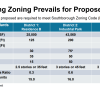

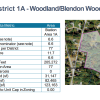
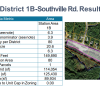
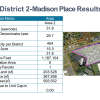
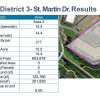
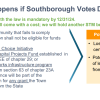

Great summary, Beth. Thanks for all you do!
Thanks for the support!